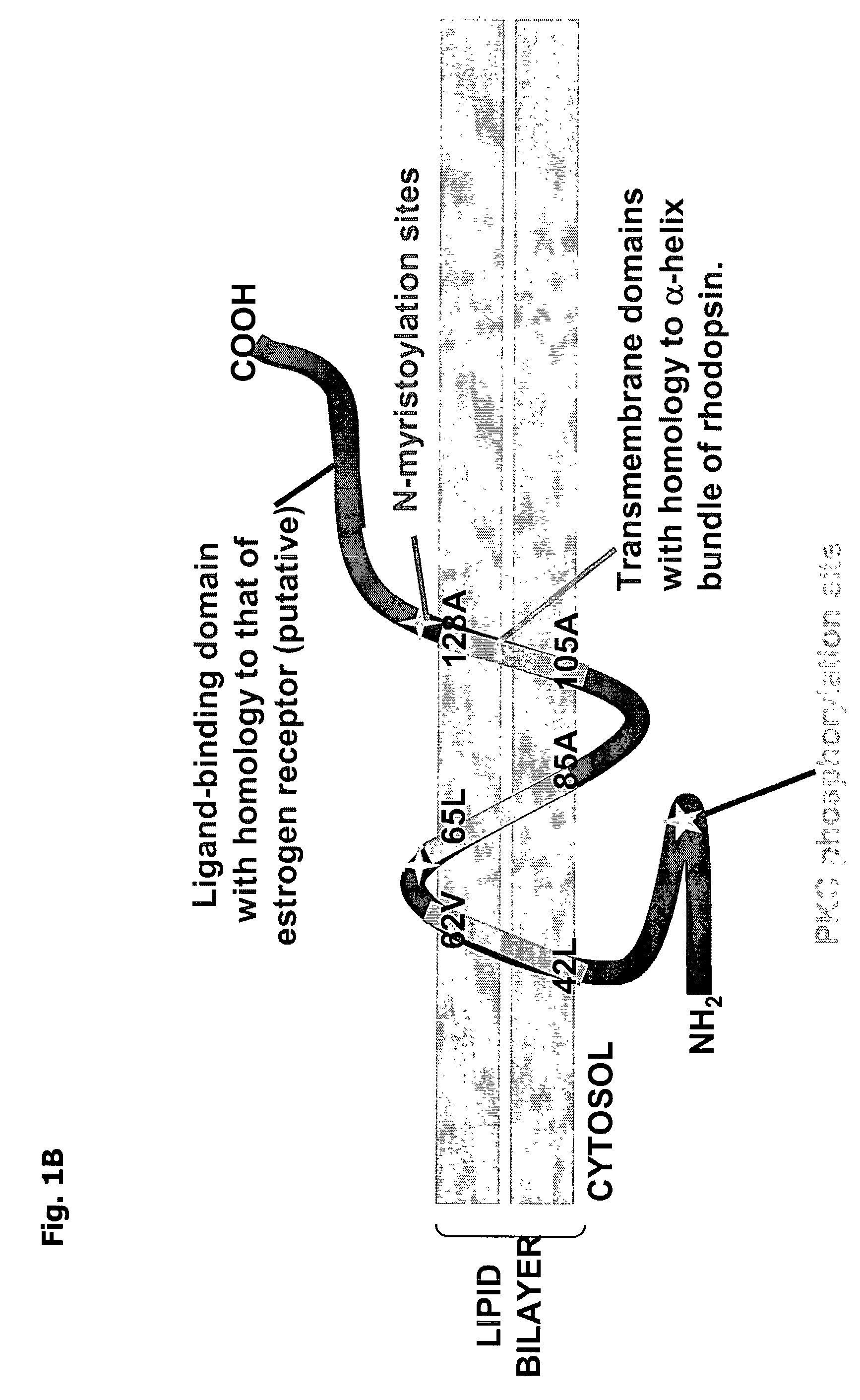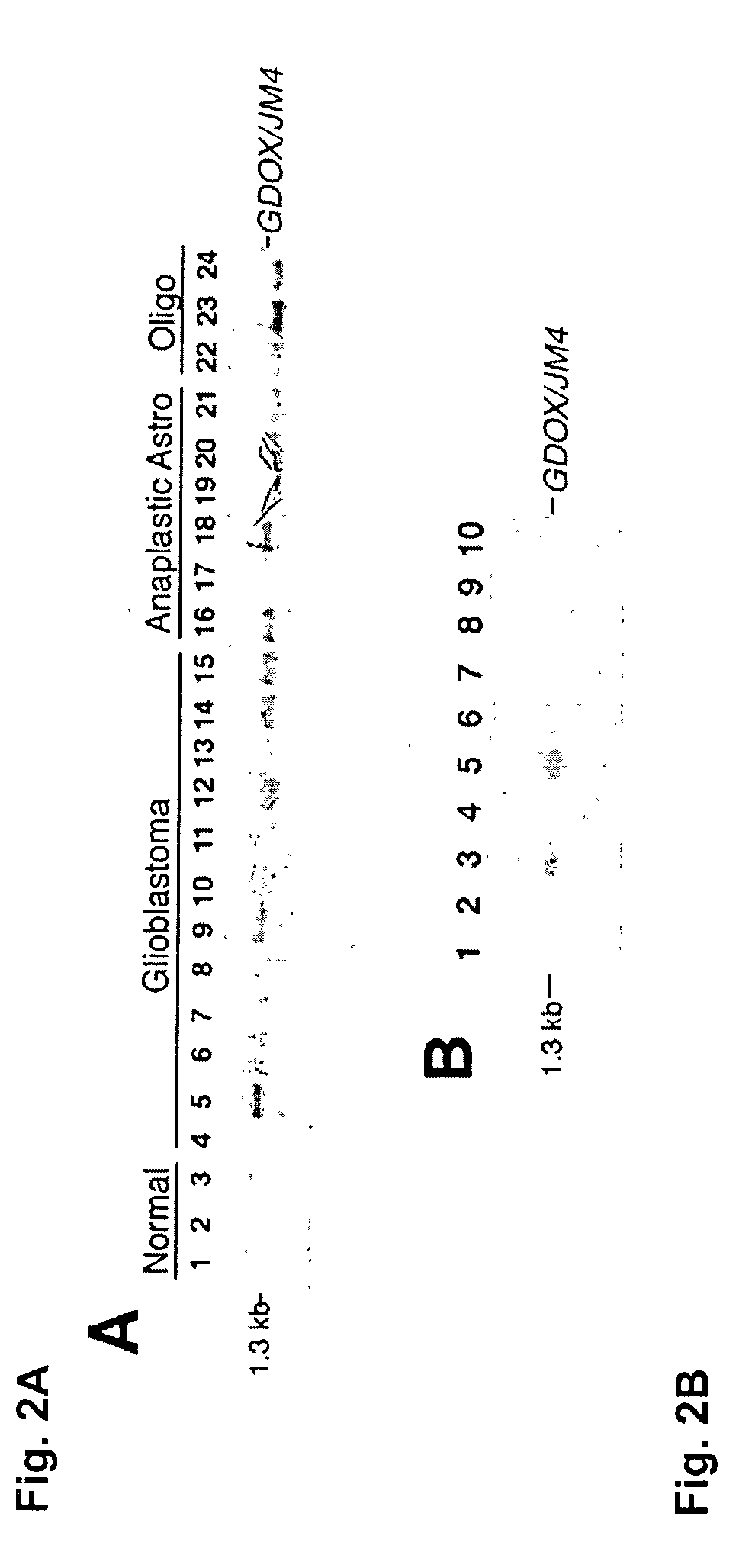Compositions and methods for treatment and detection of multiple cancers
a cancer and cancer technology, applied in the field of cancer detection and treatment, can solve the problems of insufficient treatment, no vaccine or other universally successful method of prevention or treatment is currently available, and no tissue-specific protein selection is availabl
- Summary
- Abstract
- Description
- Claims
- Application Information
AI Technical Summary
Benefits of technology
Problems solved by technology
Method used
Image
Examples
example 1
Identification of a New Glioma-Associated cDNA
[0126]This example demonstrates the use of cDNA subtractive hybridization, representational difference analysis (RDA), and differential immuno-absorption (DIA) to identify gene products that are differentially expressed in glioblastoma tumor tissue versus normal brain tissue. Candidate clones from each of the subtractive approaches were then screened in multiple tumor and non-tumor human brain tissues using cDNA microarray hybridization (Liau, L. and Yang, I., Current Genomics. 3: 33–41, 2002), and genes with consistently higher levels of expression (>5-fold) in brain tumors versus normal brain were selected.
Methods
[0127]Tissue specimens. Tissue samples from human tumor and non-tumor brain specimens were procured from patients undergoing surgery or at autopsy at the University of California at Los Angeles Medical Center, with approval from the institutional review board. All tissues were immediately snap frozen in liquid nitrogen and sto...
example 2
GDOX Expression in Human Brain Tumor Tissues
[0135]This example demonstrates differential expression of the GDOX gene in tumorigenic versus normal brain tissues via northern blot and in situ hybridization analysis using radiolabeled GDOX cDNA, and via western blot analysis using GDOX antibodies. The results show that GDOX is overexpressed in a variety of gliomas, GDOX is not expressed in normal brain or in other normal tissues examined, with the exception of expression in normal testis and very low levels in normal kidney. In addition, the increased expression is attributable to actual cellular overexpression, and not to tumor hypercellularity. The overexpression was found at both the protein and RNA levels.
Methods
[0136]Northern blot analysis. Tissue total RNA was extracted using Trizol reagent (Gibco-BRL) per manufacturer's instructions, and 10 μg / lane were separated on 1.2% denaturing agarose gels, transferred overnight to Hybond membranes (Amersham) using 10×SSC, and irreversibly ...
example 3
GDOX Subcellular Localization and Co-Expression with GFAP
[0142]This example describes the subcellular localization of GDOX and compares its expression to that of glial fibrillary acidic protein (GFAP). To determine the cellular localization of GDOX expression in U87 and primary human glioblastoma cells, immunofluorescence staining for the C-terminal end of GDOX was performed using the GDOX peptide antibodies described above in Example 2. The GDOX protein was localized primarily to the plasma membrane (FIG. 4A), suggesting that it is a transmembrane protein, as deduced from its computer-generated predicted structure (FIGS. 1A–B). To assess for co-expression of GDOX within glioma cells, double immunofluorescence staining was performed with the addition of an anti-GFAP monoclonal antibody. U87 cells were seeded on coverslips. Expressed GDOX was detected by immuno-fluorescence with an anti-GDOX peptide antibody, followed by staining with a FITC-conjugated secondary IgG. Expression of GF...
PUM
| Property | Measurement | Unit |
|---|---|---|
| Temperature | aaaaa | aaaaa |
| Temperature | aaaaa | aaaaa |
| Fraction | aaaaa | aaaaa |
Abstract
Description
Claims
Application Information
 Login to View More
Login to View More - R&D
- Intellectual Property
- Life Sciences
- Materials
- Tech Scout
- Unparalleled Data Quality
- Higher Quality Content
- 60% Fewer Hallucinations
Browse by: Latest US Patents, China's latest patents, Technical Efficacy Thesaurus, Application Domain, Technology Topic, Popular Technical Reports.
© 2025 PatSnap. All rights reserved.Legal|Privacy policy|Modern Slavery Act Transparency Statement|Sitemap|About US| Contact US: help@patsnap.com



